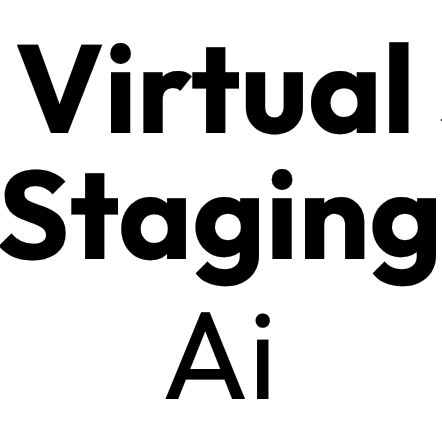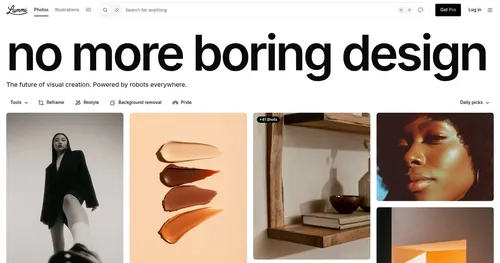Virtual Staging AI

Real estate listings can feel like a gamble. You’ve got a vacant property, all bare walls and echoing floors, and you’re hoping buyers can see past the emptiness to imagine a home. Enter Virtual Staging AI, a tool that flips this challenge on its head with a single click. Developed at Harvard Innovation Lab, this browser-based gem uses artificial intelligence to populate empty rooms with photorealistic furniture and decor, turning sterile spaces into inviting homes faster than you can say “open house.” I think it’s a game-changer for realtors who need to make listings pop without breaking the bank or waiting days for a designer.
The process is disarmingly simple. Upload a photo of an empty room, pick a room type (say, living room or bedroom), choose from over 30 interior design styles, and hit render. In about 15 seconds, you get a staged image that looks like it was professionally curated. The AI doesn’t just slap furniture onto the image; it reads light sources, adjusts shadows, and ensures perspective aligns, creating a result that feels natural. Multi-View Staging is a standout feature, letting you stage a room from multiple angles with consistent furniture placement, which is critical for cohesive listings. You can also remove existing furniture or swap out pieces, offering flexibility for properties that need a refresh rather than a full overhaul.
But it’s not flawless. Some users on platforms like Trustpilot note occasional hiccups, like furniture placement that feels slightly off or the AI struggling with unusual room angles. The tool limits you to three revisions per image, which might frustrate perfectionists working on complex spaces. Compared to competitors like Apply Design or AI HomeDesign, Virtual Staging AI leans heavily on simplicity, which is both its strength and its limitation. Apply Design, for instance, offers more manual control over furniture placement, while AI HomeDesign integrates human-assisted staging for trickier layouts. If you need granular customization, these alternatives might edge out Virtual Staging AI.
Pricing is a high point. It’s budget-friendly, with credits that roll over month-to-month, unlike some competitors where credits expire. This makes it appealing for busy realtors staging multiple listings. The subscription model feels fair, especially since you can try it free without a credit card. Plus, the abilityto sublicense images for commercial use is a nice touch for agencies looking to integrate the tool into their workflow. Social media buzz, particularly on Reddit, praises its speed and cost-effectiveness, though some photographers wish for better multi-angle furniture matching.
What surprised me? The sheer speed. Fifteen seconds to stage a room is no exaggeration, and the results often rival traditional staging, which can cost hundreds per image. For realtors or photographers looking to boost listings without sinking hours into design software, this tool is a no-brainer. My advice: start with the free trial to test its fit for your listings. If you’re dealing with standard rooms, it’s likely all you need. For odd layouts, consider pairing it with a competitor’s manual options.
Video Overview ▶️
What are the key features? ⭐
- Multi-View Staging: Maintains consistent furniture across multiple room angles.
- Furniture Removal: Clears existing furniture from images in one click.
- Style Selection: Offers over 30 design styles for customized staging.
- Fast Rendering: Generates staged images in approximately 15 seconds.
- Commercial Sublicensing: Allows users to sublicense images for client use.
Who is it for? 🤔
Examples of what you can use it for 💭
- Realtor: Stages vacant homes to attract buyers with inviting visuals.
- Photographer: Enhances property photos for clients with minimal effort.
- Property Manager: Refreshes outdated rental listings to boost tenant interest.
- Homeowner: Visualizes decor options before selling or renovating.
- Marketing Agency: Creates consistent listing images for real estate clients.
Pros & Cons ⚖️
- Fast staging in 15 seconds
- Affordable with rollover credits
- Over 30 design style options
- Struggles with odd room angles
- Less customization than rivals
FAQs 💬
Related tools ↙️
-
 Promethean AI
Artificial intelligence that builds virtual worlds
Promethean AI
Artificial intelligence that builds virtual worlds
-
 Ocoya
An AI social media tool that mixes the best of ChatGPT, Canva, and HootSuite into one platform
Ocoya
An AI social media tool that mixes the best of ChatGPT, Canva, and HootSuite into one platform
-
Rendair Transforms sketches and images into photorealistic architectural renders in seconds
-
 Lummi
Offering a treasure trove of AI-generated visuals that cater to different creative needs
Lummi
Offering a treasure trove of AI-generated visuals that cater to different creative needs
-
Ink Studio AI Creates custom tattoo designs using AI from text or images
-
fylm.ai Generates AI-assisted color grades and LUTs for images in the cloud

